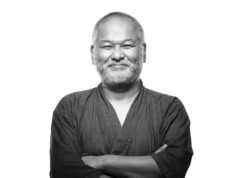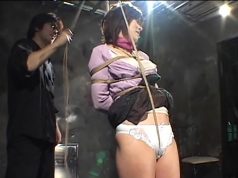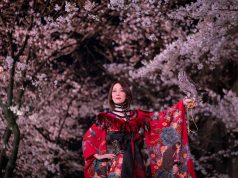What a year 2020 has been.
For those of us in the world community of Kinbaku practitioners and enthusiasts, the advent of the Covid-19 virus has brought about a significant change in the status quo.
One aspect of Kinbaku that I believe makes it special to us is the intimacy of rope. Being able to convey emotion, feeling, and heart through touch and contact with others. For years we all enjoyed live performances, in person group teaching salons, and one on one learning.
No longer.
Almost all of these events have been put on hold or modified to adhere to local Covid-19 safety guidelines. Virtual sessions and instruction are now the norm where they were once the exception.
As we adjust to the reality of the new normal, bakushi Milla Reika, is creating an innovative method to convey the intimacy of rope that might be absent from the current offering of online Kinbaku presentations.
I met with Milla in July of 2019 as we discussed her photo-book titled “The Descent of Inanna.” I reached out to Milla again this year to find out how she was addressing the new world of Kinbaku.
As always, speaking with Milla is like reuniting with an old friend. Her enthusiasm, warm smile, and open demeanor made it seem as if she was speaking with me in person rather than via video chat from Japan.
When we spoke last year, you mentioned that you had some plans to travel in 2020. Perhaps teaching or performing. Is that on hold for now because of Covid-19?
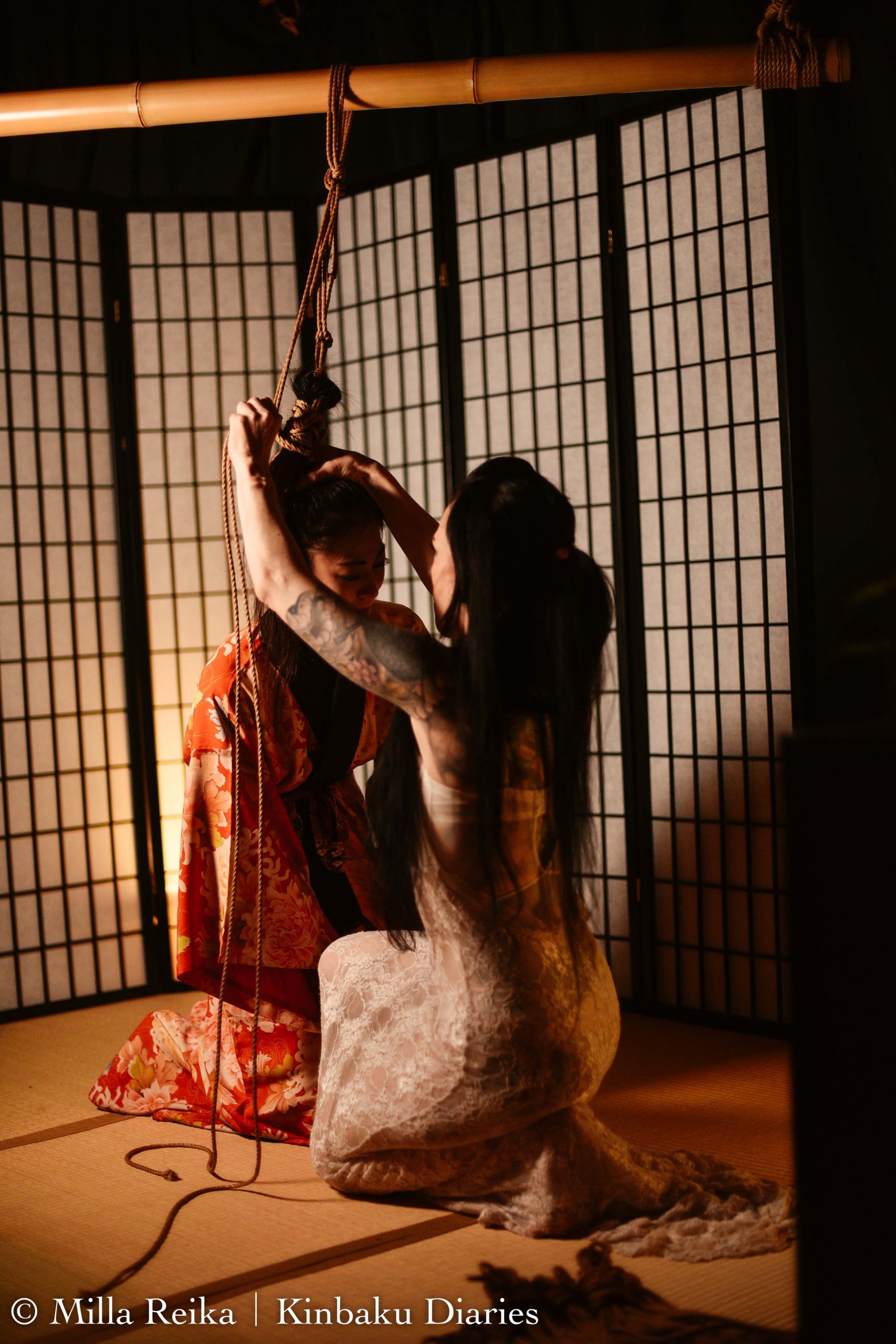
Right. Definitely. I was actually going over to Berlin to join Eurix in April. That got cancelled at the last minute. I’m not sure if traveling will be possible for quite a while.
The rope community seems to have increased its online presence due to Covid-19. What do are your thoughts about this?
There is a lot going online. Many bakushi, including myself, have been cautious about teaching online up until now because there is a lot that cannot be translated. Meaning that it falls slightly into the “don’t try this at home” variety. Being online, we are essentially saying “try this at home.” There is the danger of people re-enacting what they learn without the proper understanding. This can lead to injuries, consent violations, or people going way above their own skill set. That is a little bit frightening.
Obviously, it’s also opened up a whole new avenue to communicate. People who have been hesitant about opening up their world to others are opening up more and more. The current online world is bridging gaps between countries and people and it’s exciting to be able to connect with more people. There are positive things to come out of this.
Will the shift to more online activities lead to a loss of social interaction?
I think that a lot of people that come into the rope community don’t necessarily have a partner at home with them. They may also look for the social aspect of workshops as a way to meet other people that they can tie with. For those people, I think it’s going to be harder to practice and to continue with Kinbaku online. Also, being online does take away a lot of the peripheral learning through social interaction in a workshop environment.
It’s in the break times, when you are conversing and chatting back and forth, that a lot of the techniques are shared or ideas come up. Without that aspect, I think there’s going to be a loss of communicating or reiterating the essential points as well as the back and forth discussion that leads to realization through interaction. This social aspect will be lost. I’m not sure how much you can recover when online.
What is the situation like in Japan at the moment? Are the Kinbaku bars still open and are there live performances?
Most of the bars are running at the moment. At the end of the day, that’s these people’s livelihoods. There is no support from the government. Business is very slow, but people are still going out.
I performed in August of this year at two venues. But everyone is keeping a low profile and are still hesitant to do anything that attracts a large crowd at once.
Are you still teaching your salon in Osaka on a weekly basis?
We stopped for a while and just started up recently. But it’s a very small group. A lot of people are a little bit afraid to come out and attend live events. We are keeping it to very strict limited numbers, and participants come at their own risk. We can take all the precautions, but at the end of the day when you are tying someone, you are in very close proximity to them. If one person has Covid-19, then the chances of spreading it to everyone in the room is quite high even with precautions in place. I think that we just have to tell people that you are welcome but come at your own risk.
Let’s discuss your new online project, Kinbaku Diaries. Was this a concept that you developed in response to the impact of Covid-19 to the rope community?
Actually, this was something that I conceptualized in June or July of last year. I had this idea of what I wanted to do, and had been slowly thinking it over and developing it in my mind. Then Covid happened and all of a sudden everyone is doing this and that online.
What is Kinbaku Diaries? Is it an online teaching tool? A video performance? How would you describe it?
Kinbaku Diaries is a learning resource. It’s learning through observation. I’m definitely trying to keep it as natural as possible. Nothing is rehearsed or staged. We don’t even have a cameraman or videographer in the room to keep it as close to how I would tie and how I would interact when it’s just my partner and I present.
The idea is to give the viewer an insight into not just on one part of a rope scene, but the interaction from the beginning right to the very end and everything in between.
How did the concept evolve?
It originally started as an educational tool. Over the last few years, I’ve had a lot of people approaching me who are traveling to Japan and are interested in private lessons. It’s very limited as they usually can only take one lesson and then go home. I’ve been asked if I have videos online or have online tutorials so that they can continue learning from me.
I explained that I don’t personally agree with online tutorials because there is too much that you can’t communicate. There are too many aspects that you have to nurture and which cannot be taught. But as more people asked me about videos, that started me thinking that there is a need and that it could be a very useful resource. That is pretty much where it started.
Why are you calling this project Kinbaku Diaries?
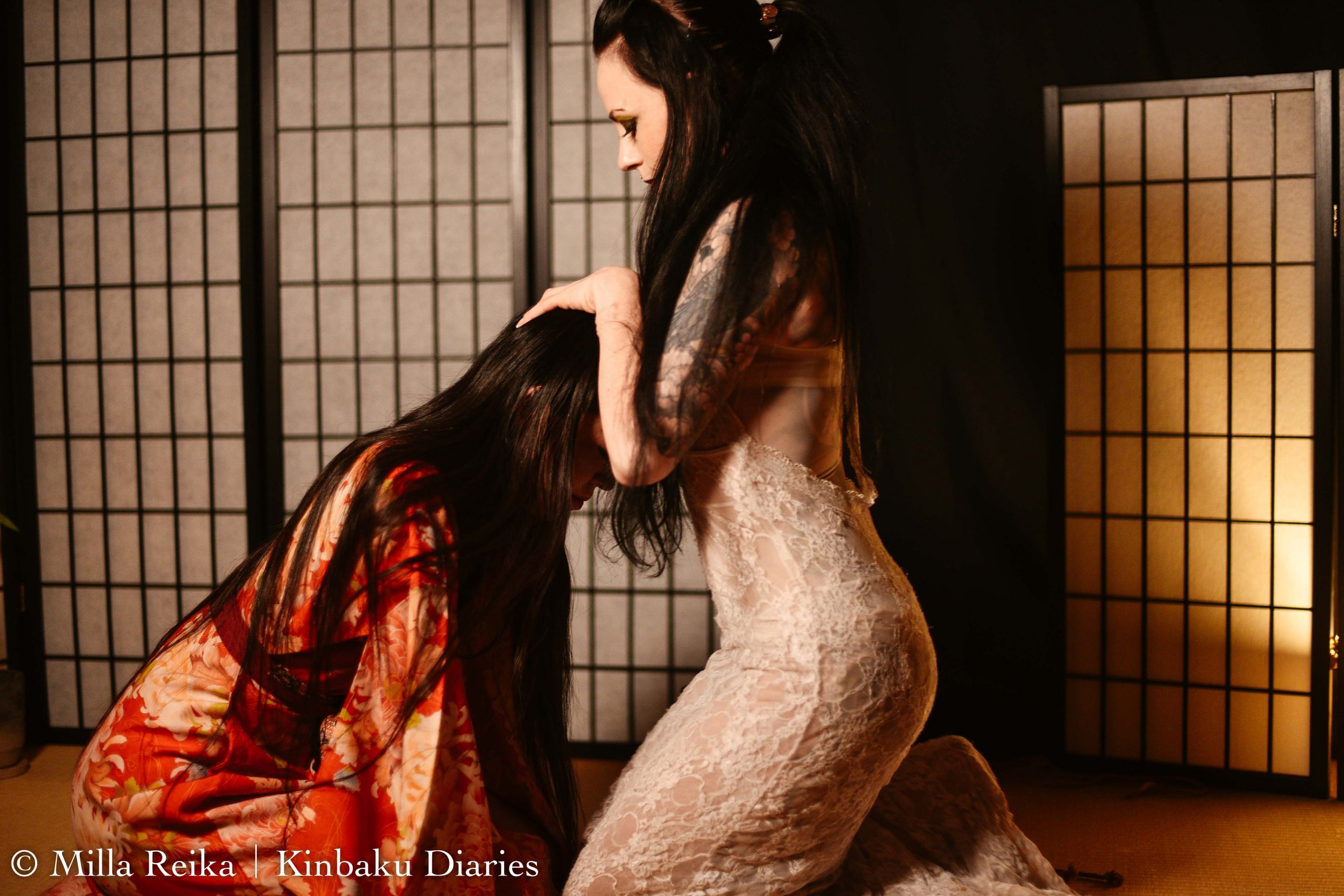
I was talking with one of my rope partners, Ageha, and she was telling me that she recorded every single tie and rope experience. She has a little diary of who, what, where, when. That was where we came up with the idea of recording our own video journal. That’s why it’s called Kinbaku Diaries.
Do you have an outline of what you want to demonstrate to the viewer for each video?
When I start, I might have a vague idea of what I’m going to do. But it’s really about going with the energy that is coming from my partner and where we are in the moment. As I start tying, it just flows. Sometimes it will be very ground based. Sometimes a mixture. Other times it will be harder with more challenging suspension patterns.
For that reason, the videos are very much like seeing a live private session between two people. I will eventually try to categorize them to make it easier for viewing and selecting.
Kinbaku Diaries is capturing the essence of the moment versus step by step instruction.
Yes. There is absolutely no instruction. After I finish, there will be comments and a little bit of a debrief. I’ll review what we did in the video, the main points that should be focused on, and perhaps why I chose to change a tie part-way through. For example, I might have gone for a suspension and decided to abort and tie more on the ground, so I’ll explain why.
The last video that was filmed had forty minutes of ground work, then we moved to suspension for about twenty minutes, then back on the ground for another twenty minutes. The viewers have the freedom to watch the sections that they are interested in. They may focus on the groundwork and skip suspension or vice-versa. My hope is that the viewers will focus on the
sections that resonate with them most and match their skill level.
Will your partner be providing afterward commentary as well?
Yes, definitely. I want to get input and present both sides. What was felt. What was challenging for her. The great thing about the reactions of my partners are that they are real. There is no acting going on.
I will also be filming some sessions with male and other female partners of different body shapes and sizes. I personally enjoy tying with a range of people regardless of gender or body type. My rope adapts to the person I am tying depending not only on their physique but also on our relationship.
That will be very unique. I can’t recall seeing a video where the person being tied provides feedback. It’s usually from the bakushi’s perspective.
That’s true. That’s also a big part of learning for the people that are tying. When they finish a scene they hopefully are talking and communicating with their partner. I definitely want to keep both perspectives in the after-commentaries.
You are planning on initially having six videos. Will there be additional content on your website?
The content will be continuously growing. The videos tend to be quite long. I may split them into chapters at some point, so that people can stop and come back to where they left off. There is a lot of content with each video being from sixty to one hundred and twenty minutes or so long. Hopefully people can watch them over and over again while focusing on different points, and get a lot out of each video. I also want to have live streaming sessions that I’ll set up at different times on a weekly basis. Those will be Q&A times. I’ll be there and people can jump on and ask questions.
All videos will be available on your own website, Reika-Kinbaku.net correct?
Yes, it’ll all be available there. For subscribers, you’ll have your own log on ID and you’ll have the full video library that you can view on demand.
What makes Kinbaku Diaries different from other similar videos and why should people subscribe to your website?
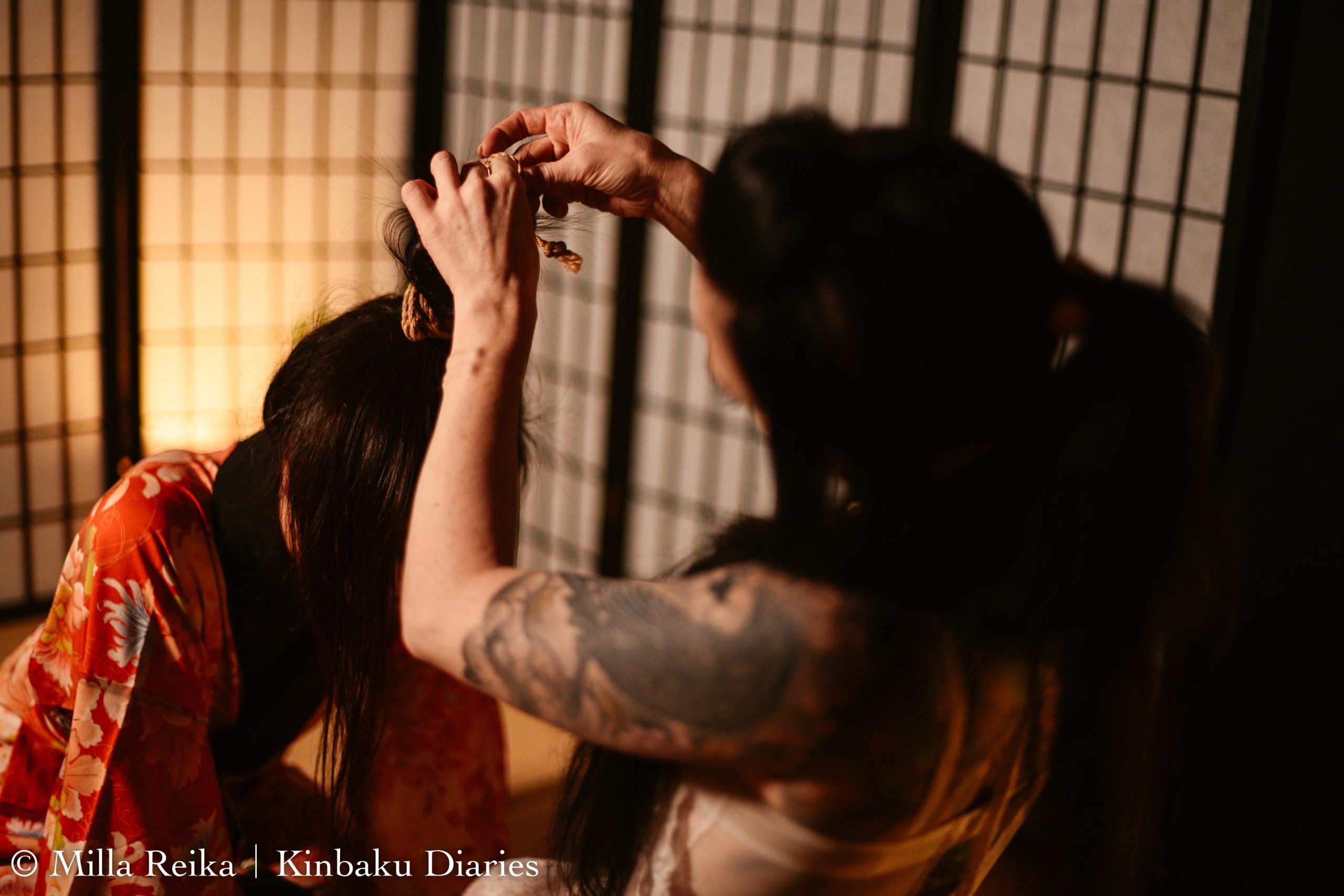
To my knowledge, I have not found anything closely similar to what we are doing. I want people to see Kinbaku in practice in a real setting. How I react, how I troubleshoot, or where I go when there is an issue.
When I’m teaching rope, I notice that a lot of people will stop a scene when their partner calls out. You don’t have to finish a scene then. A lot of times when I’m doing a suspension and it’s too much for my partner at the time, or the ropes were not perfect, or maybe a rope slipped slightly ending up on the bone area, in that case I’ll go to groundwork and continue tying and usually have an amazing session.
The viewers will pick up on different things as they progress. A beginner watching now may pick up some things, and if they go back to the same video in two or three years, they may see things completely differently.
I’ll explain some of what I do in the videos for the viewer. The editing will also give hints as to where there is something I want you to see or focus on. These hints may be how I am holding my partner or how I’m manipulating my body and moving it around.
When will Kinbaku Diaries be ready for viewing?
End of October for the official release date. I do have two full videos up already that are from preliminary shoots. They are available for purchase and you can download and watch them at your leisure. The official content and the live streaming will be part of a monthly subscription.
We might start with one video and release new videos weekly to start out with. Then continue with monthly releases. My rope changes with time, and over the course of time there will be an evolution. Maybe the people that watch my videos will benefit from seeing this progression as they also evolve on their own personal rope journey.
Useful Links:
Milla Reika’s website: https://www.reika-kinbaku.net
Milla Reika’s Instagram: https://www.instagram.com/milla.reika/


